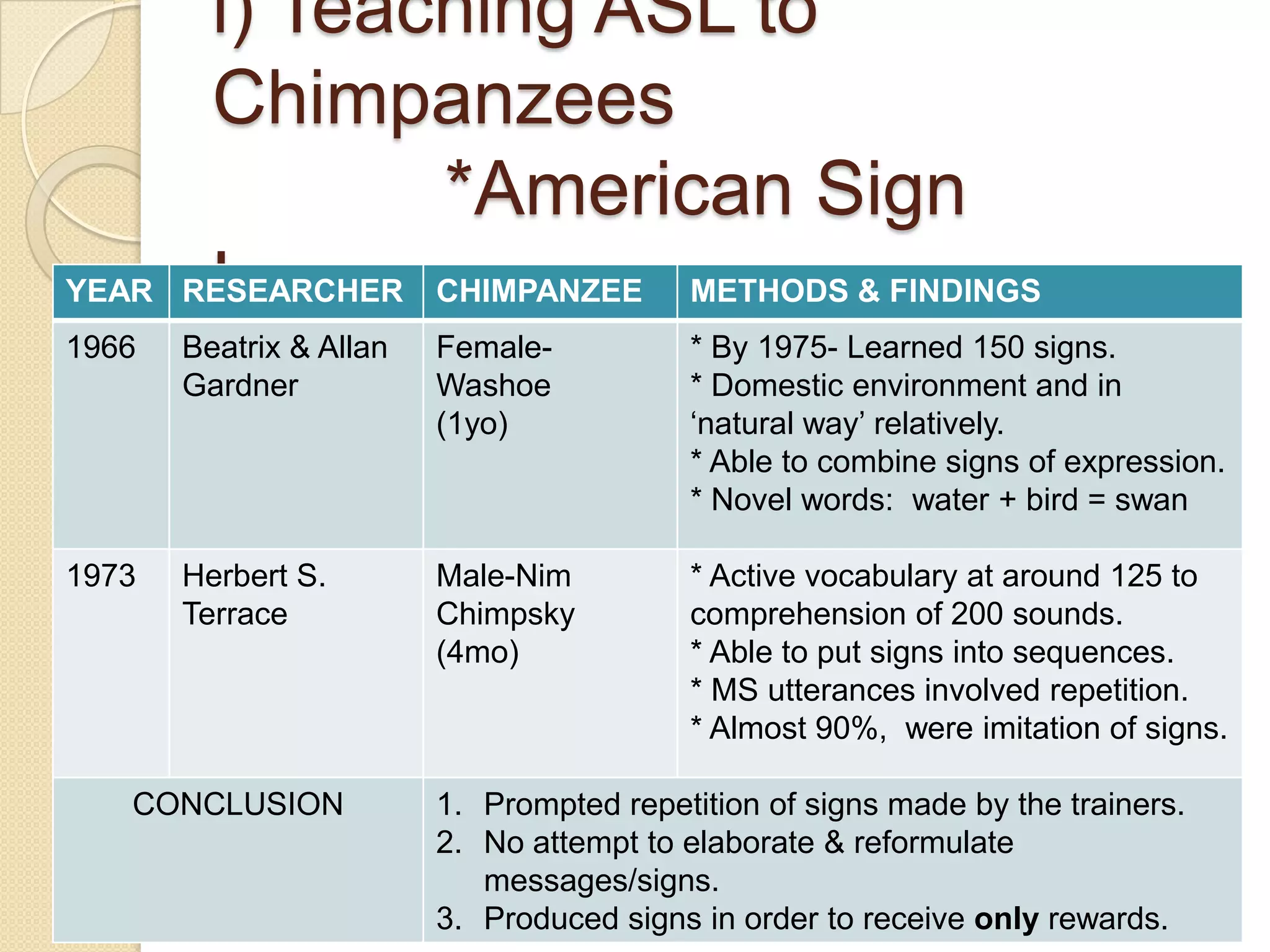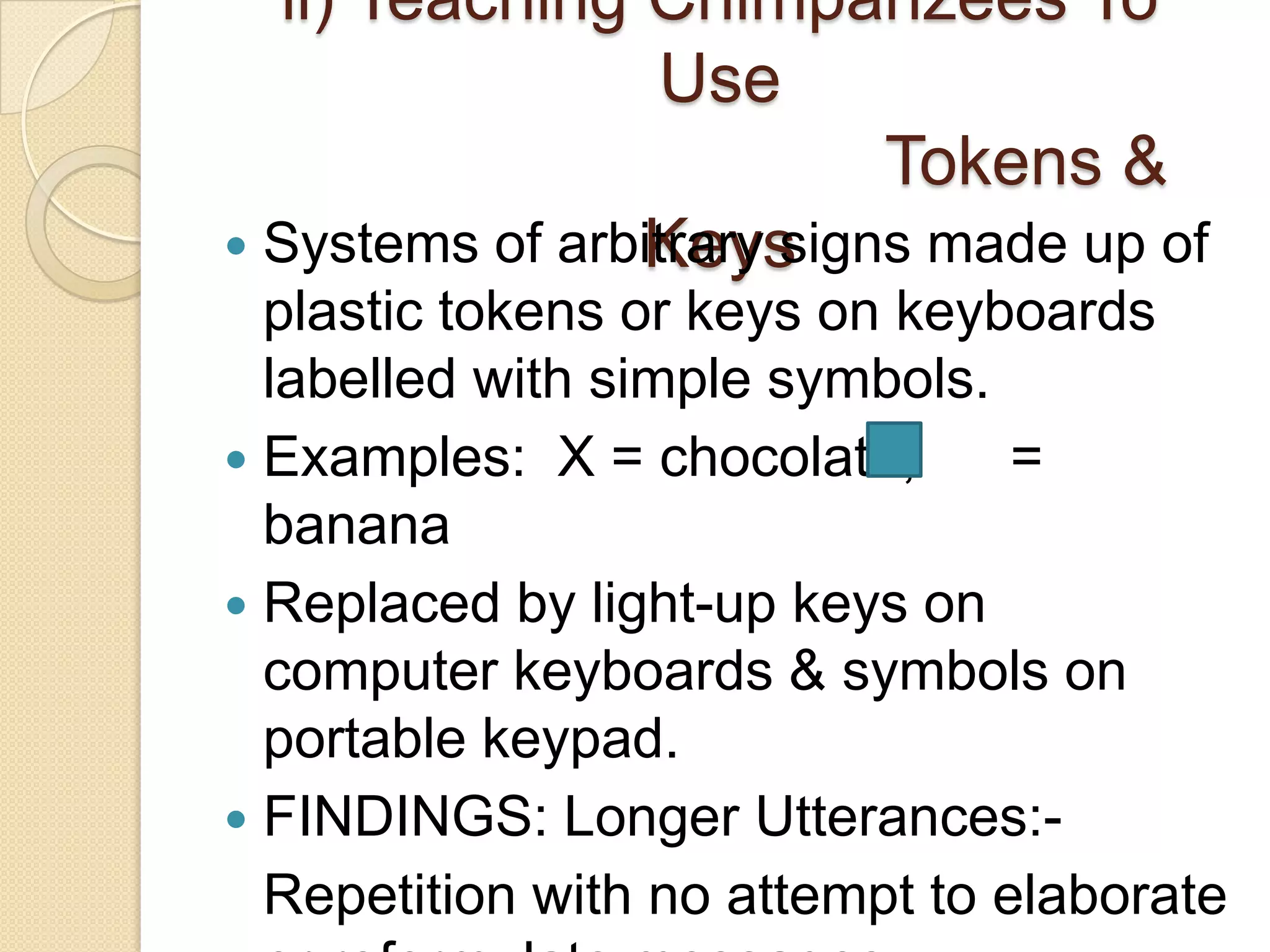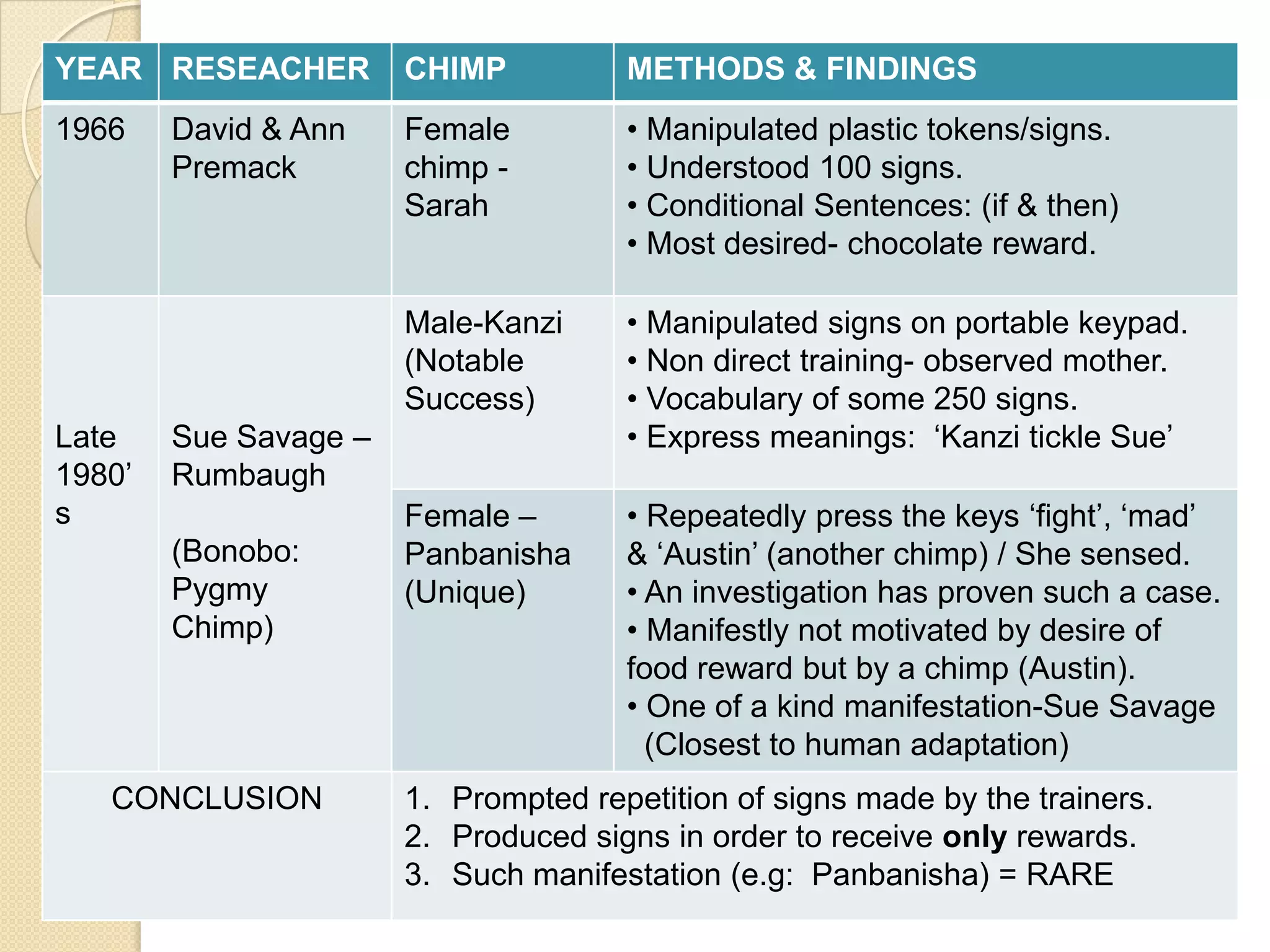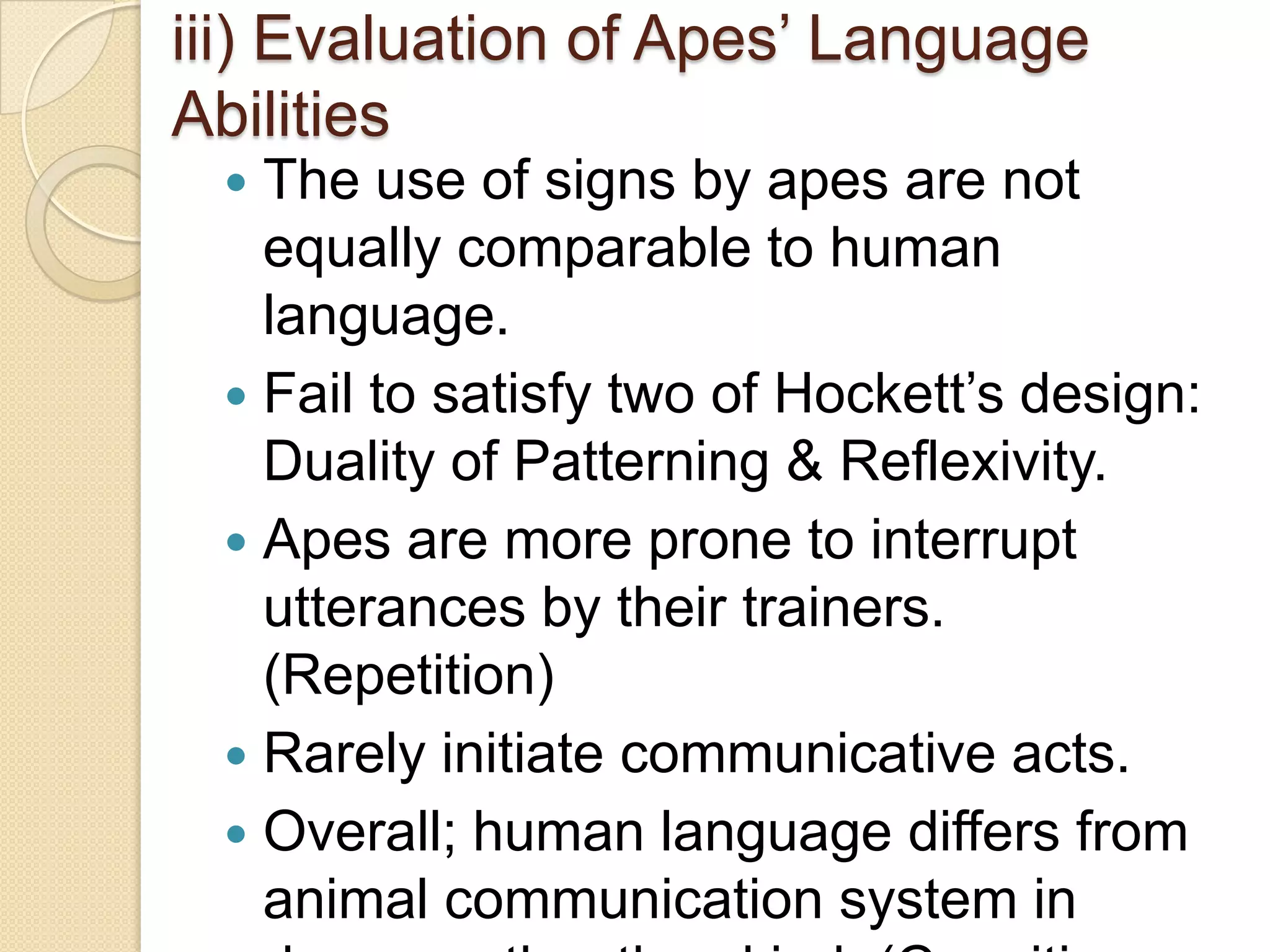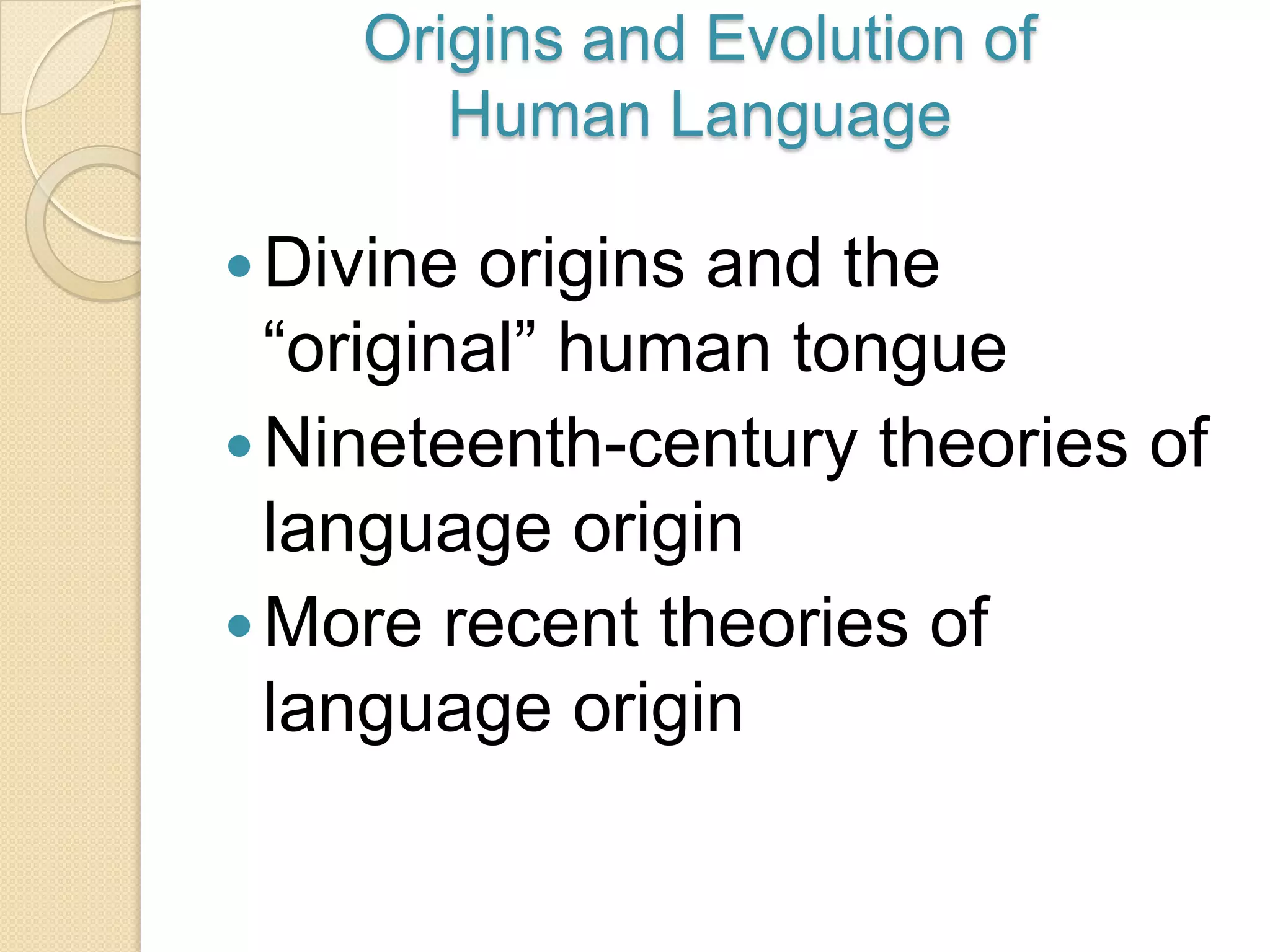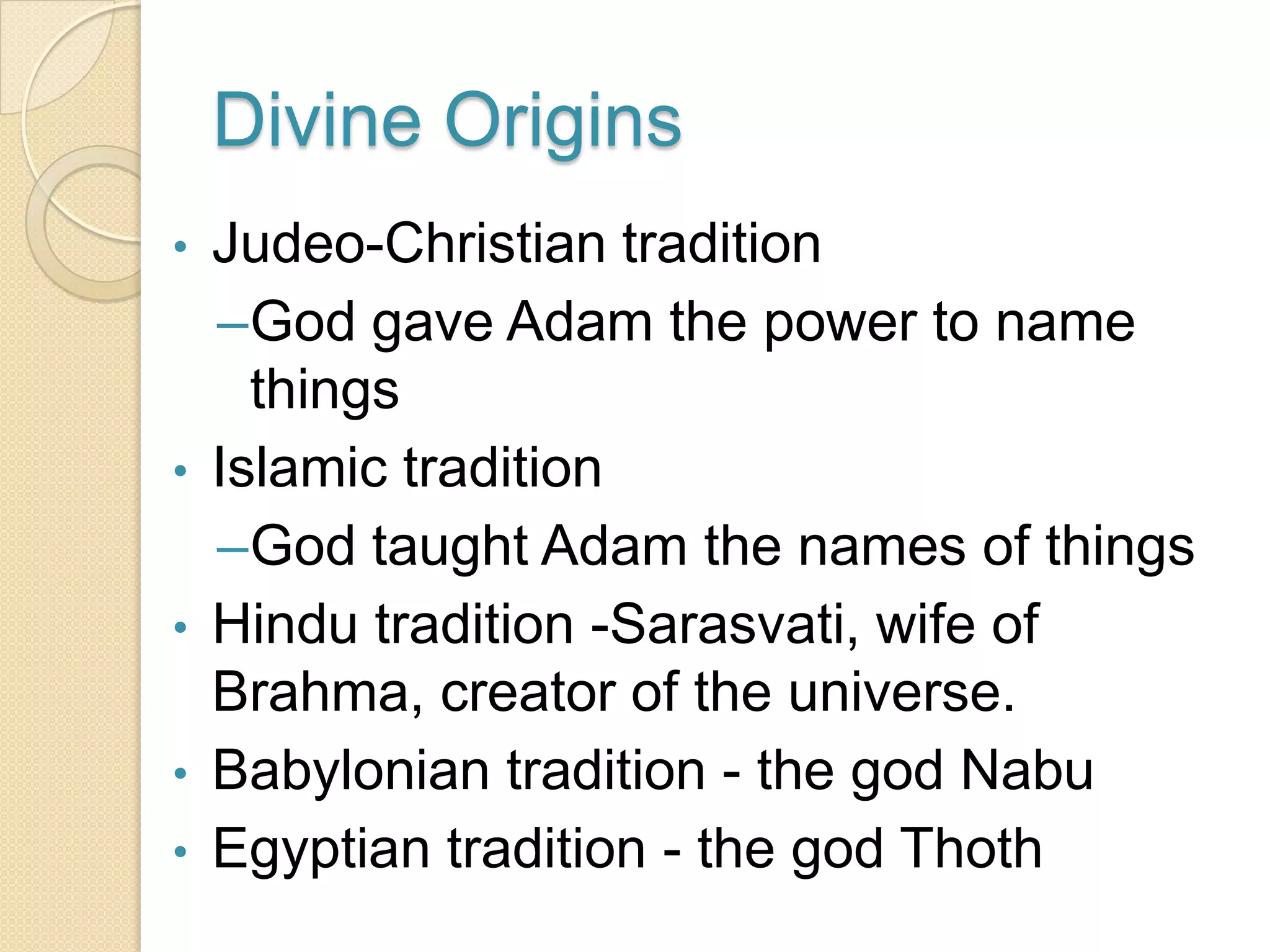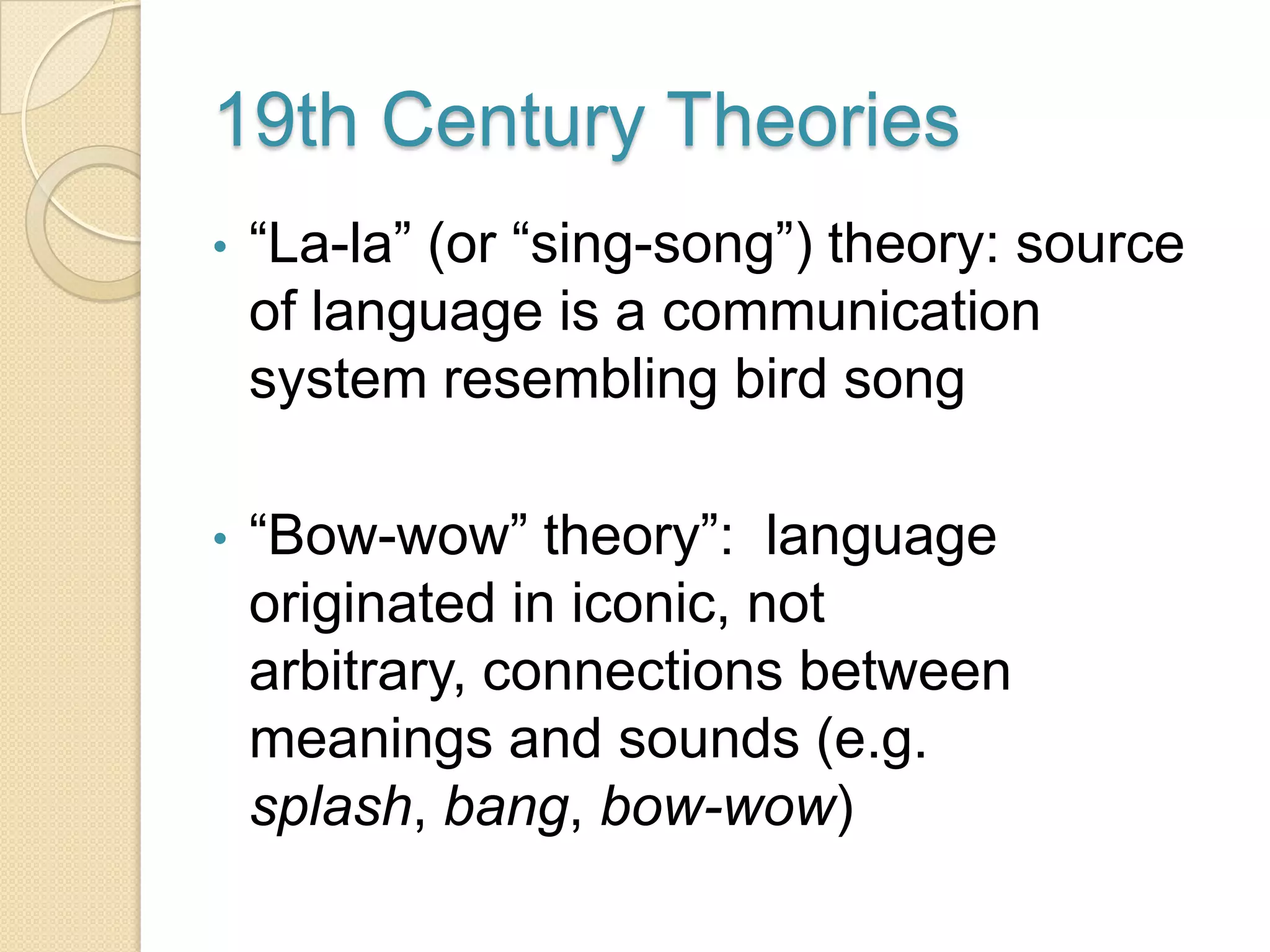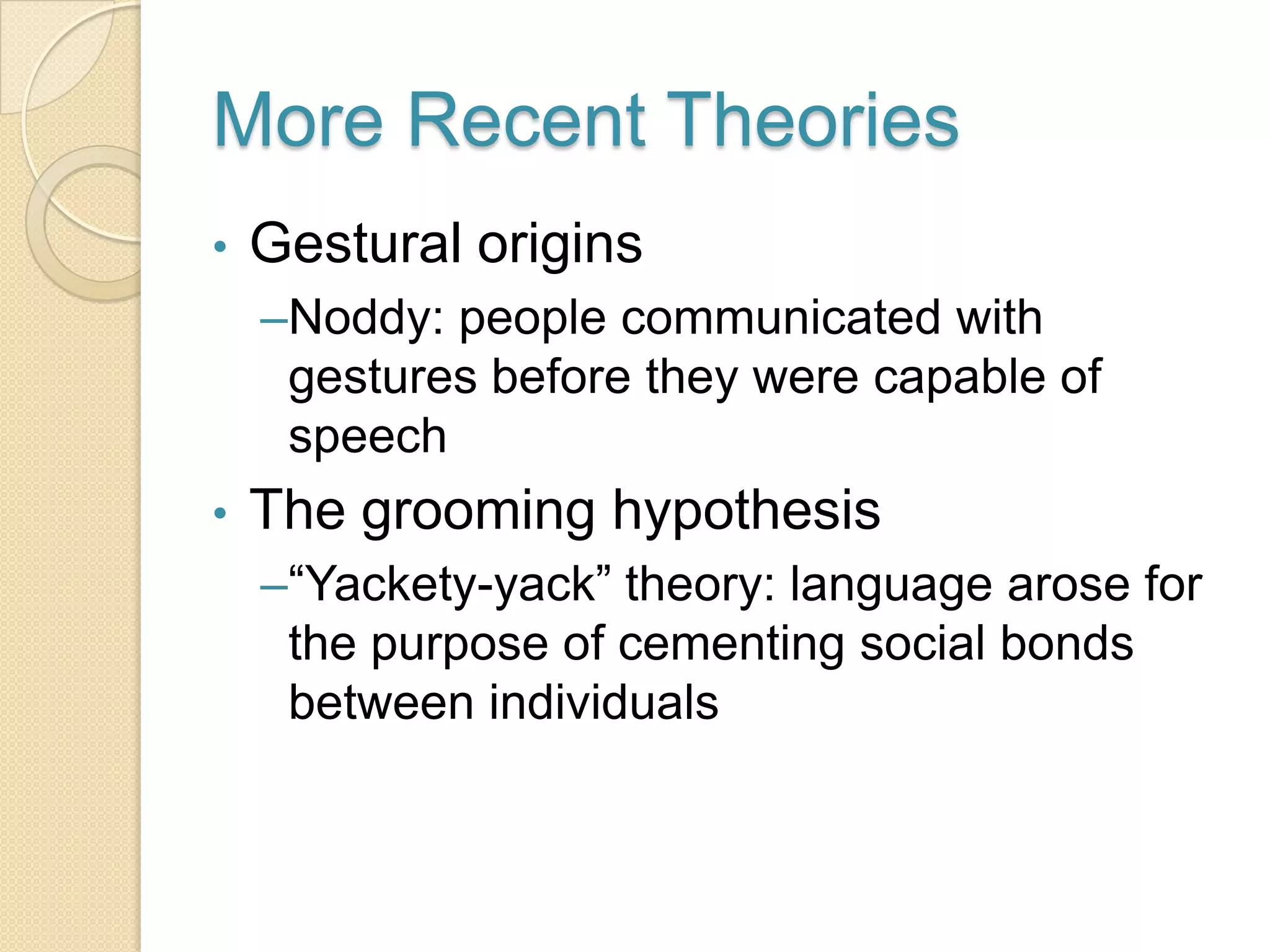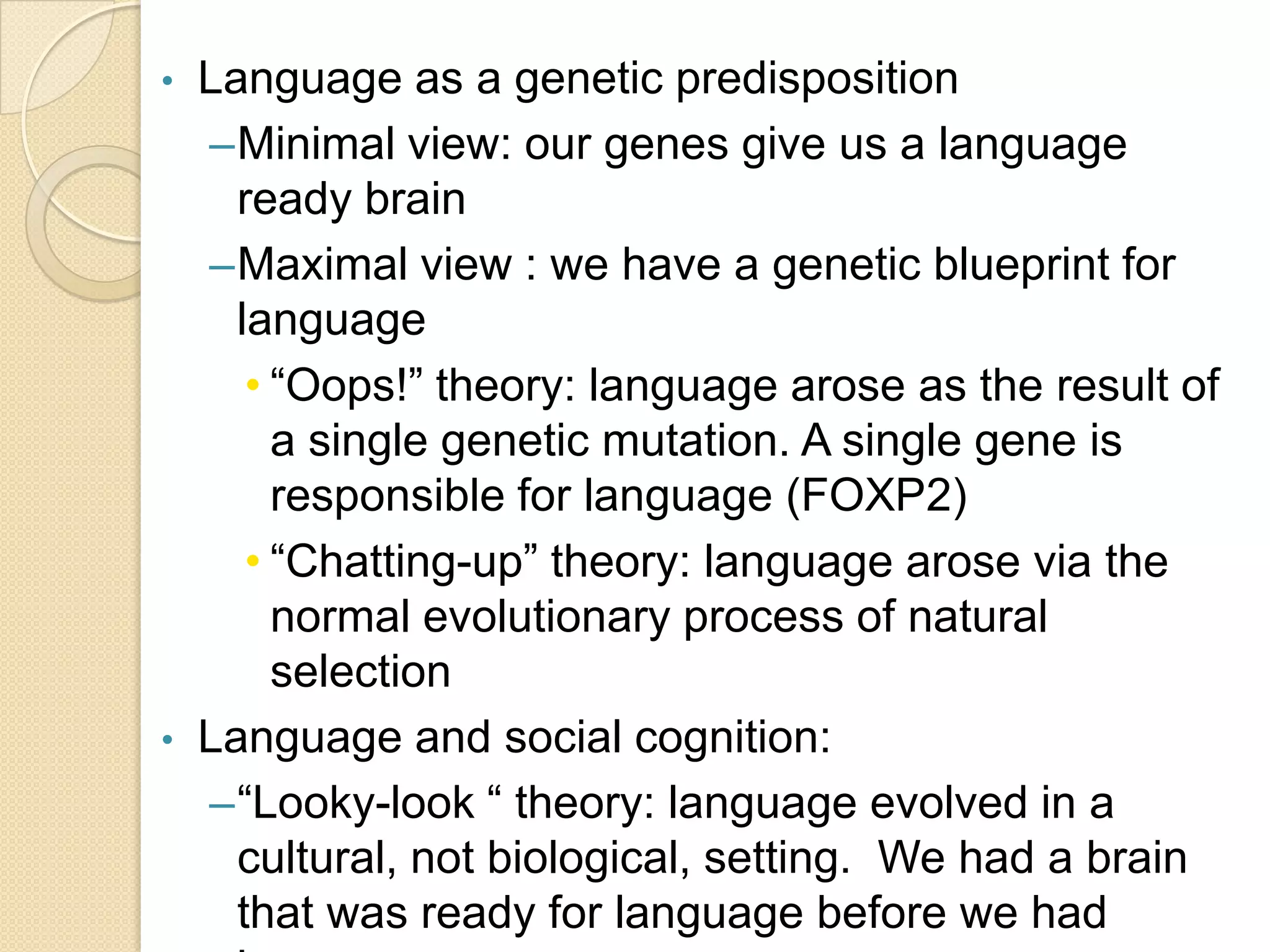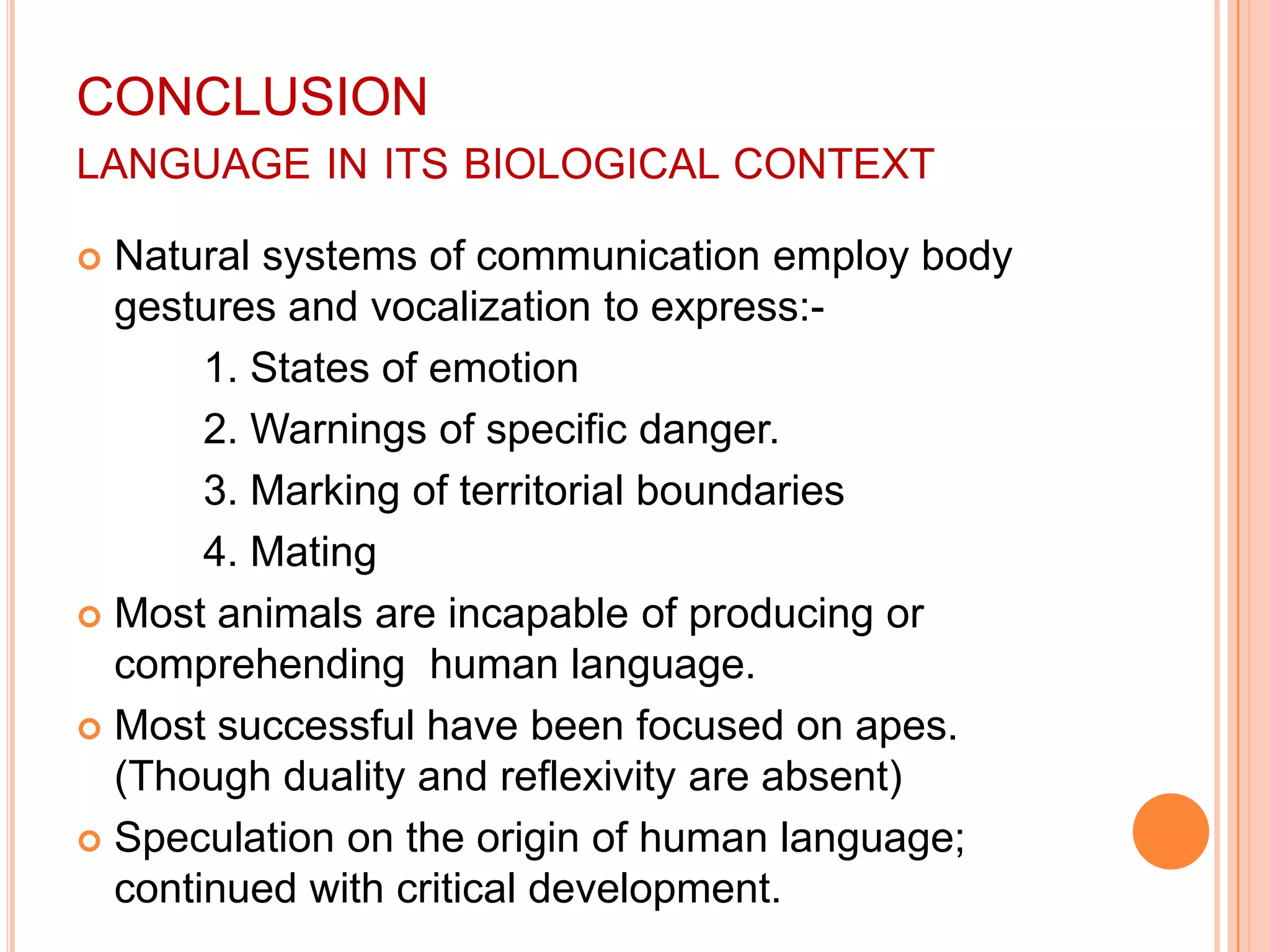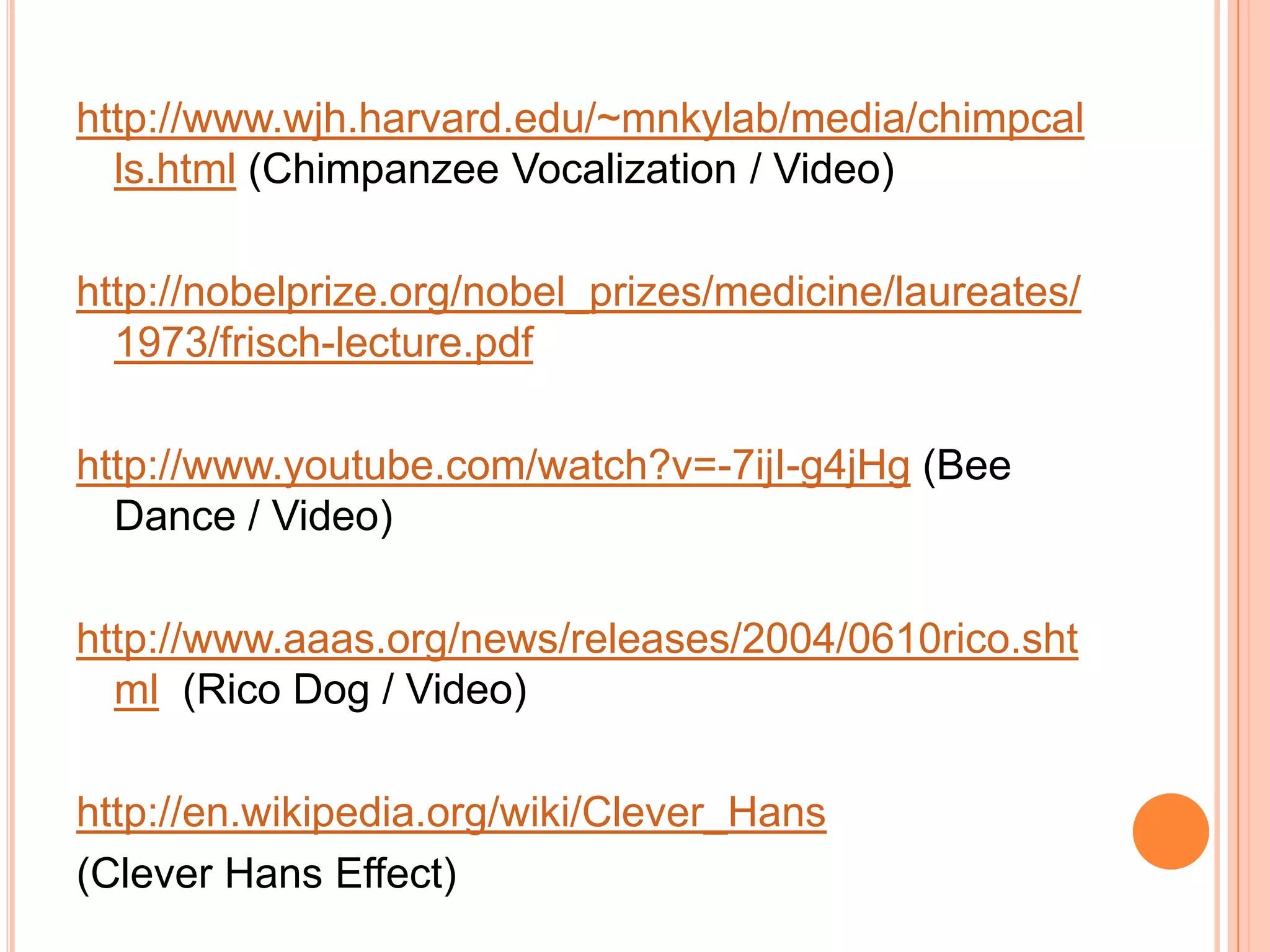The document explores the biological context of language, comparing human language with the natural communication systems of various animal species, including bees, birds, vervet monkeys, and apes. It discusses attempts to teach human language to animals, such as dogs and chimpanzees, and evaluates their language abilities against human language features. The origins and evolution of human language are also addressed, with various theories presented, revealing that while animal communication shares certain aspects with human language, it ultimately differs in complexity and functionality.
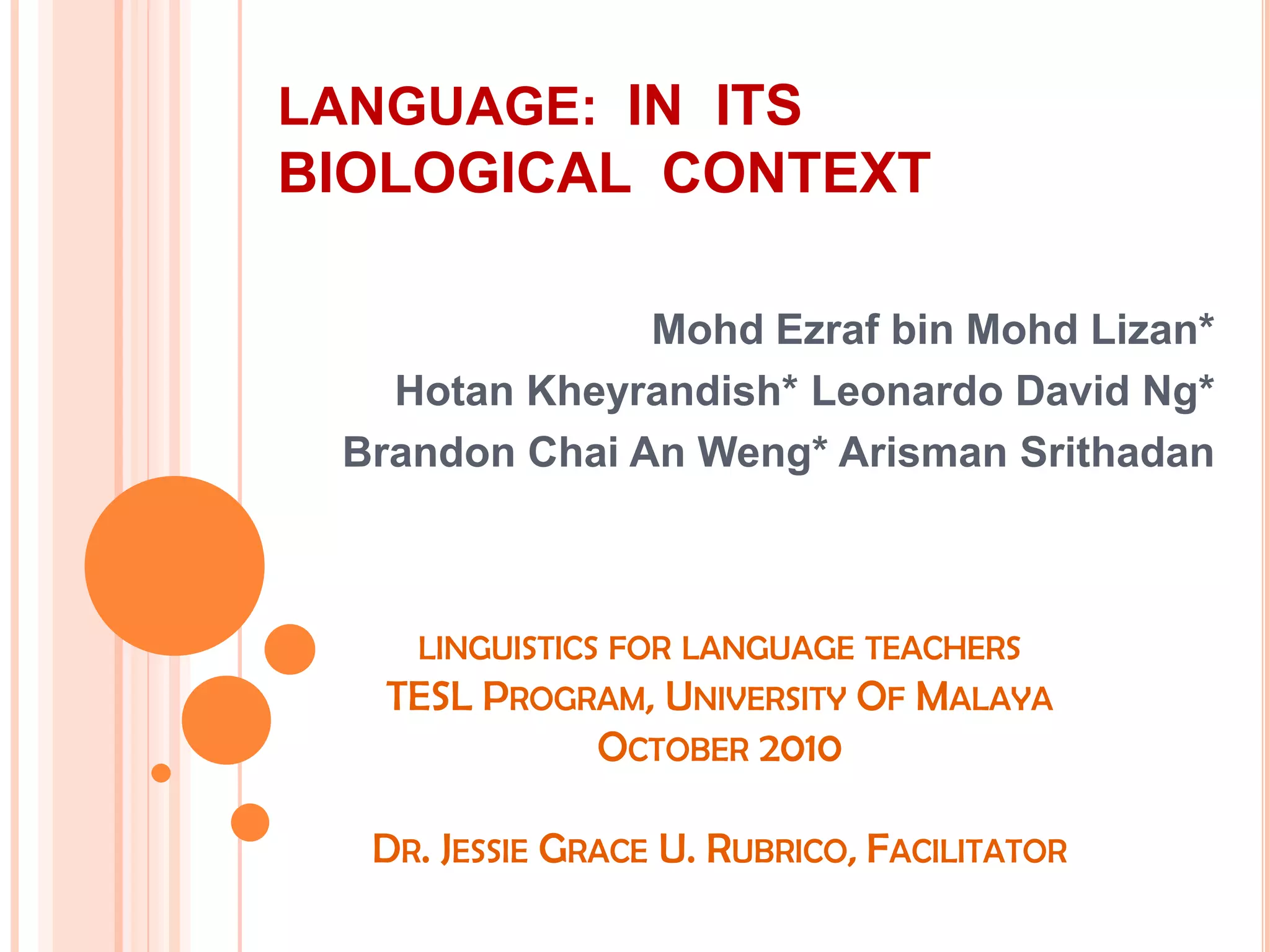
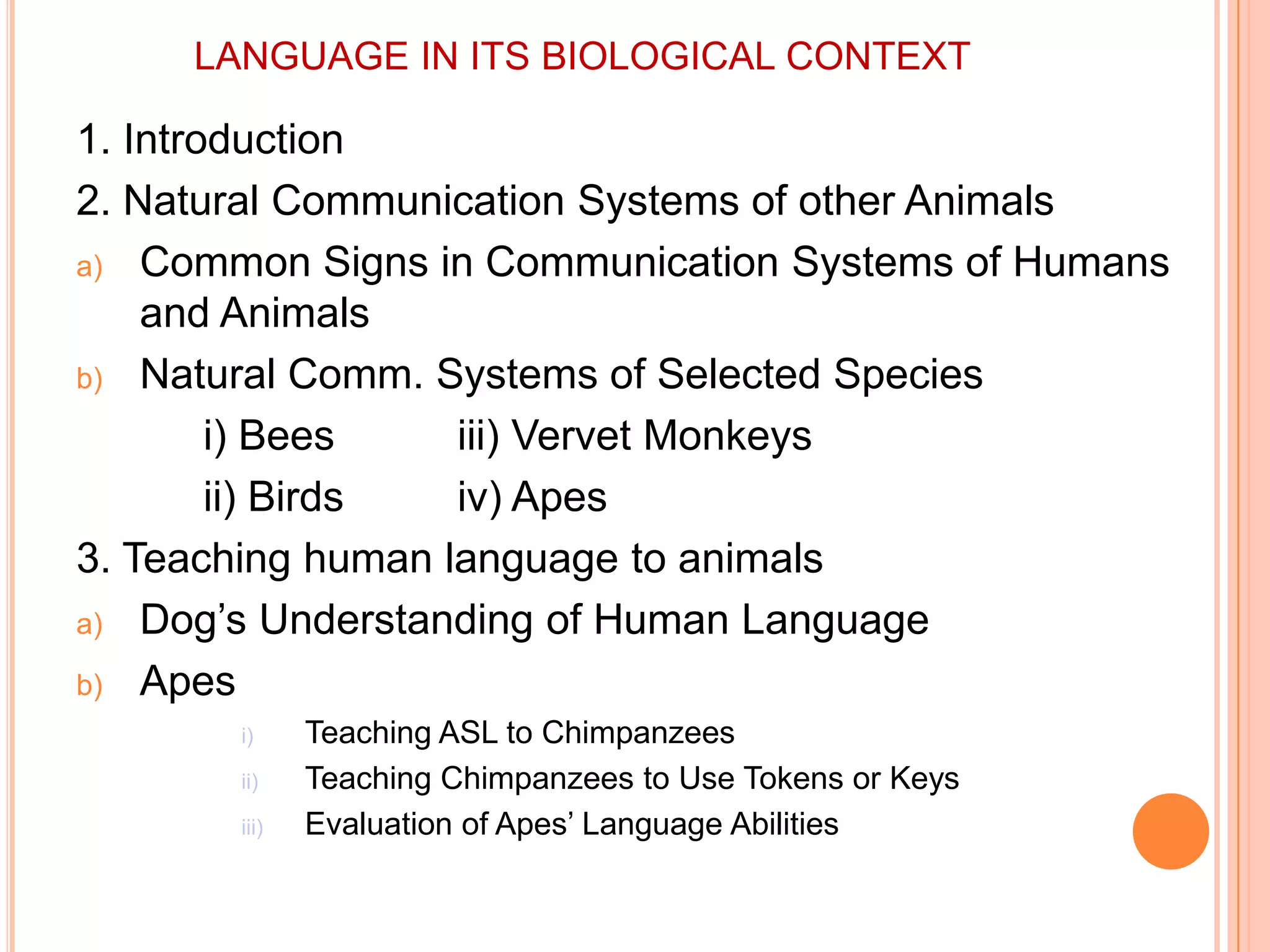

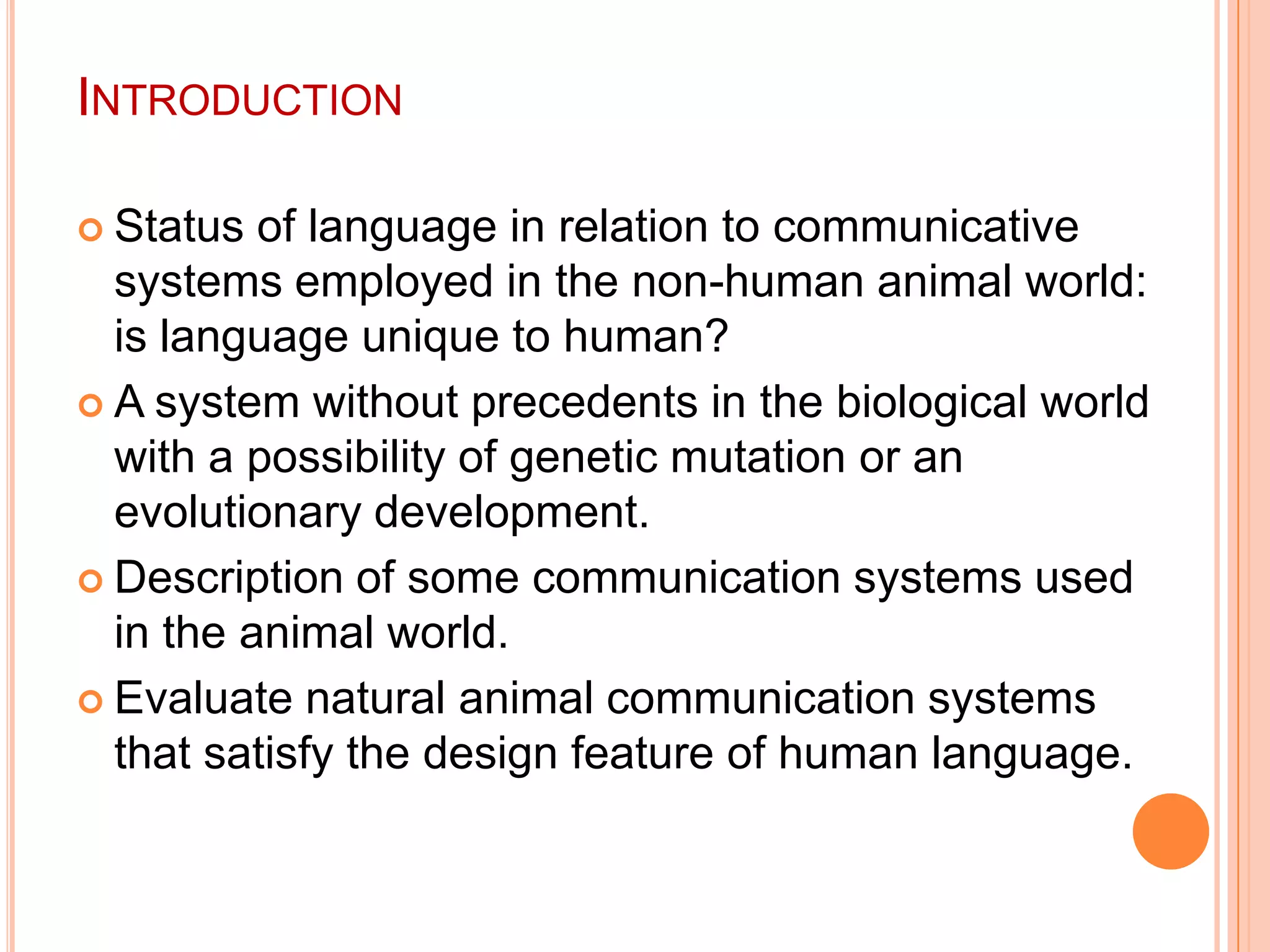
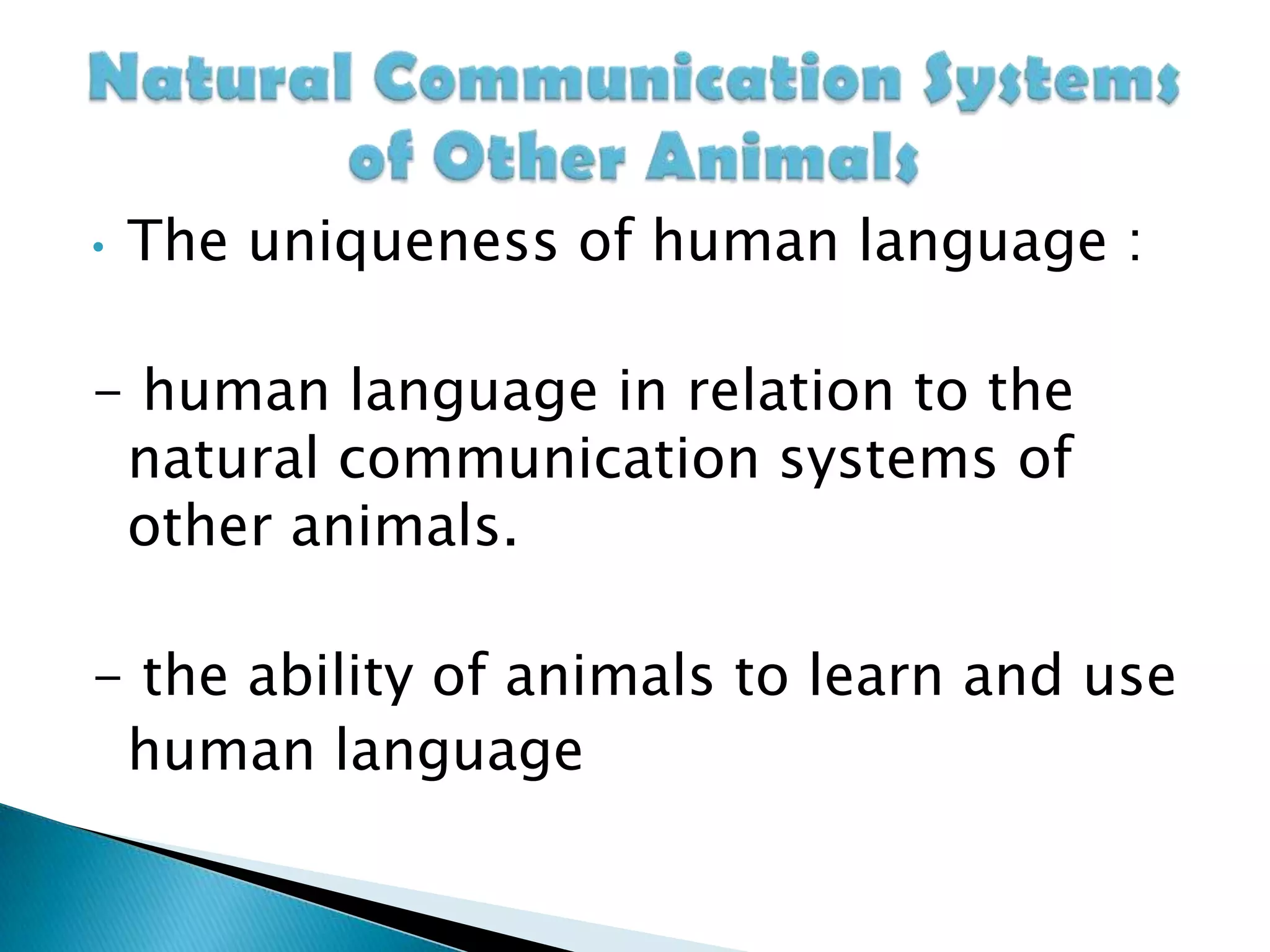
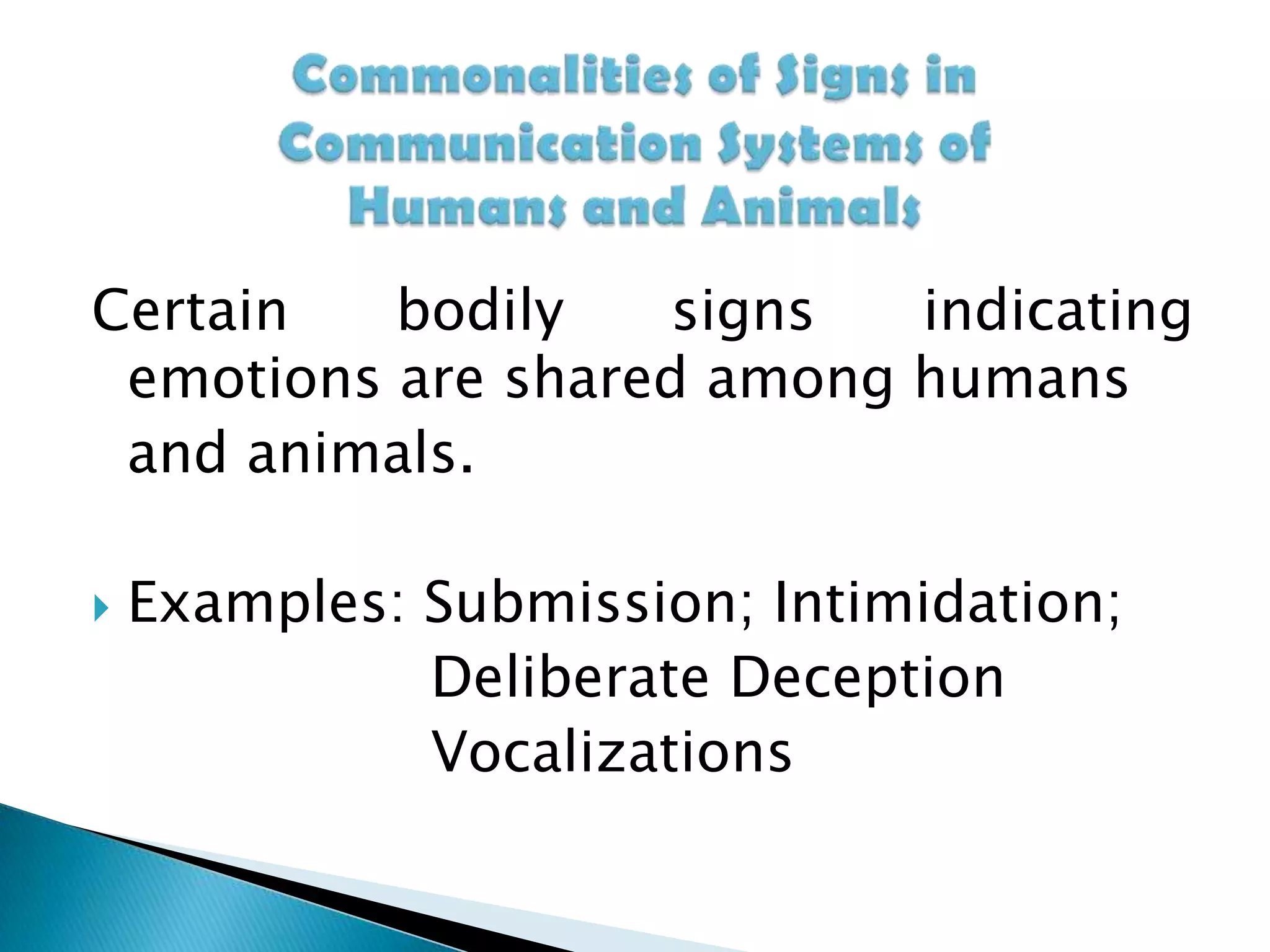
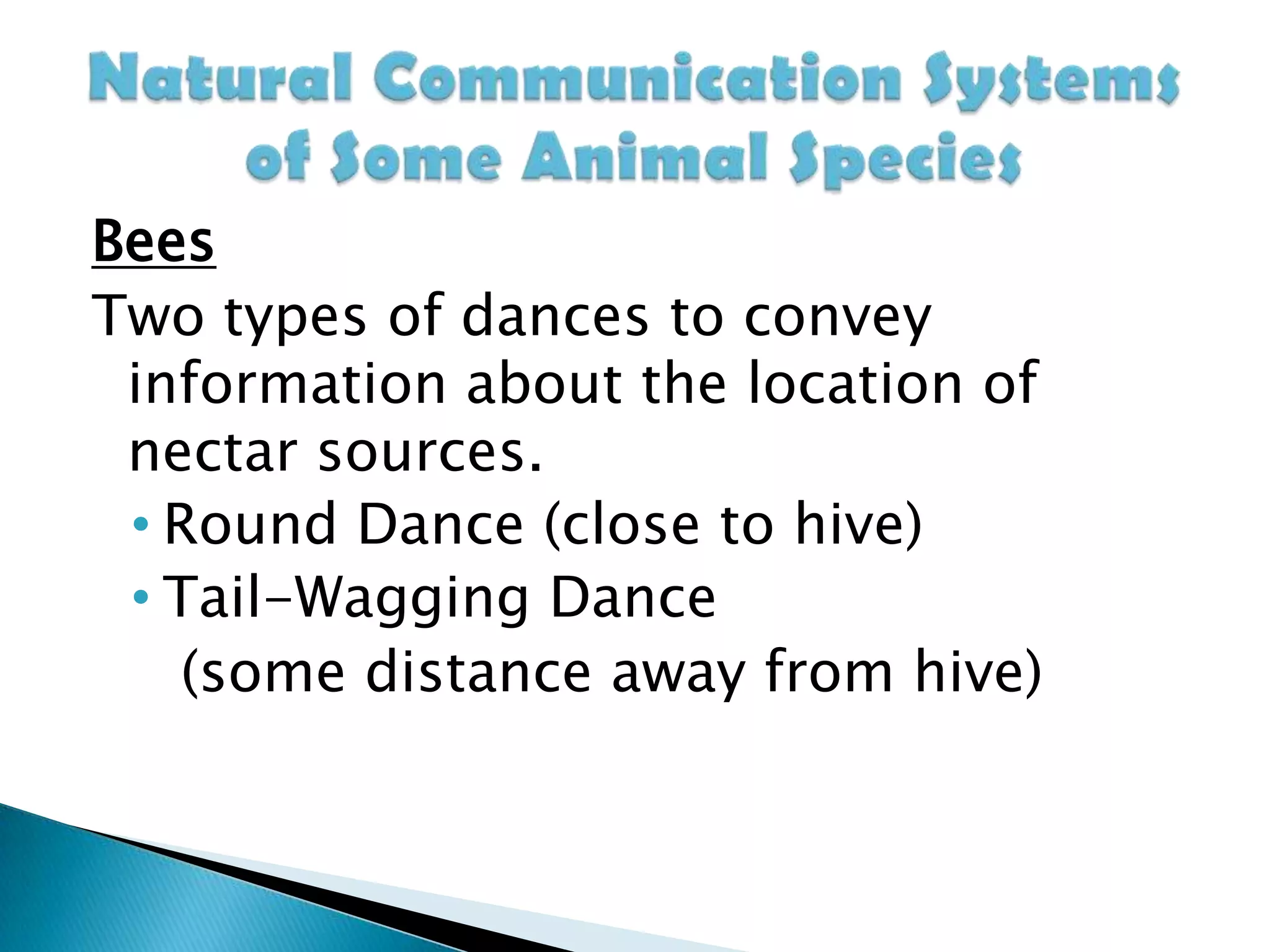

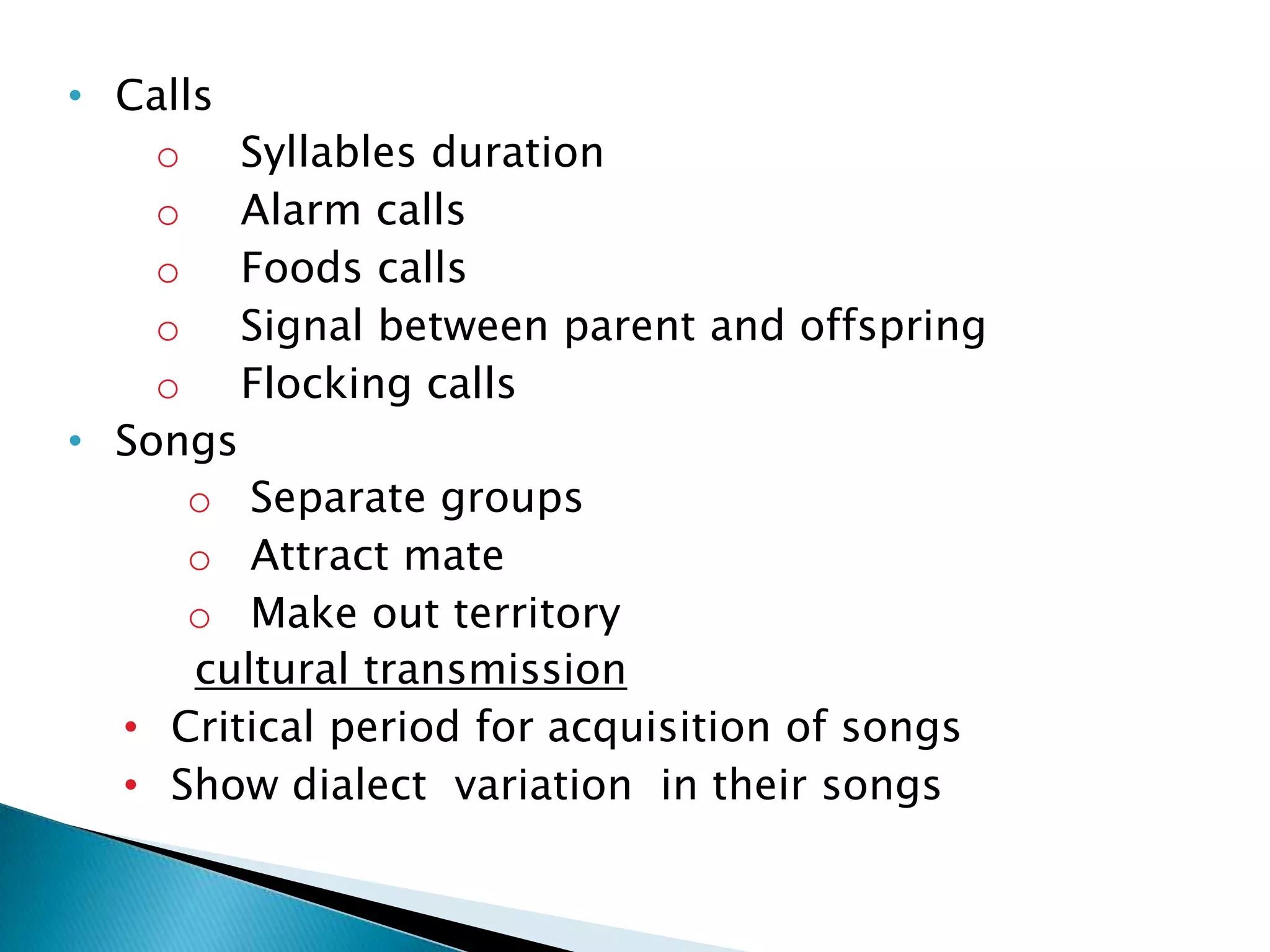
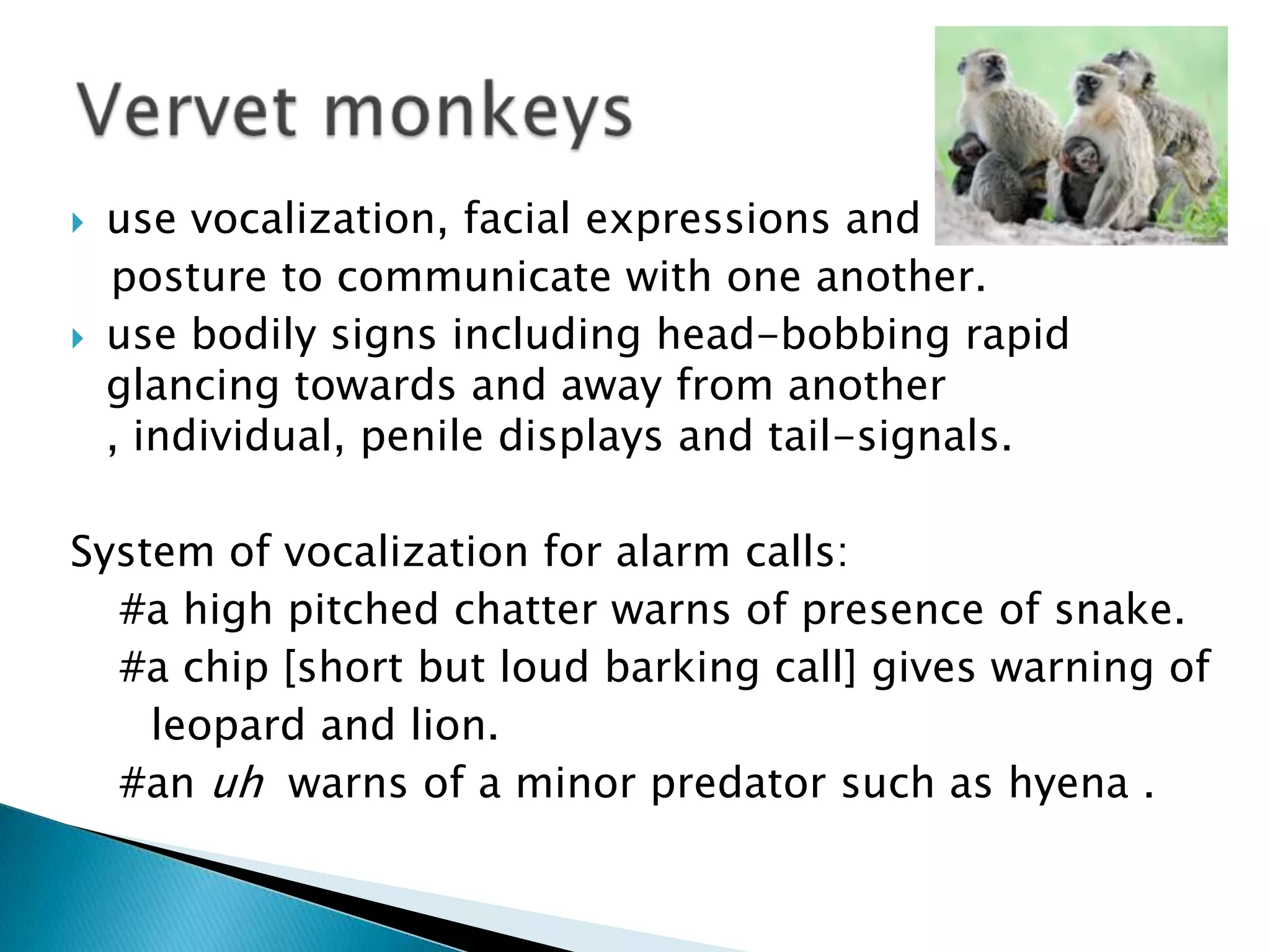
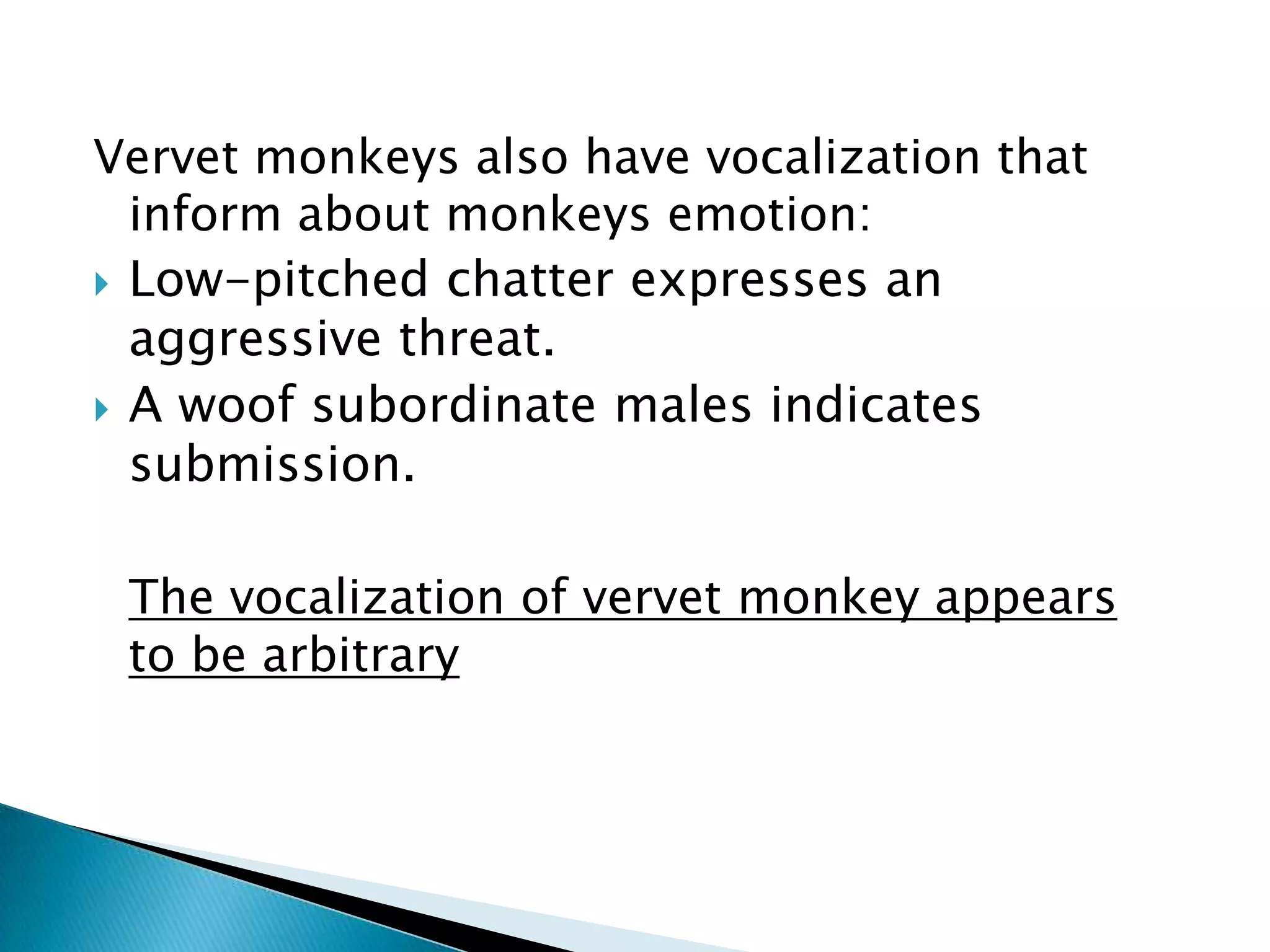
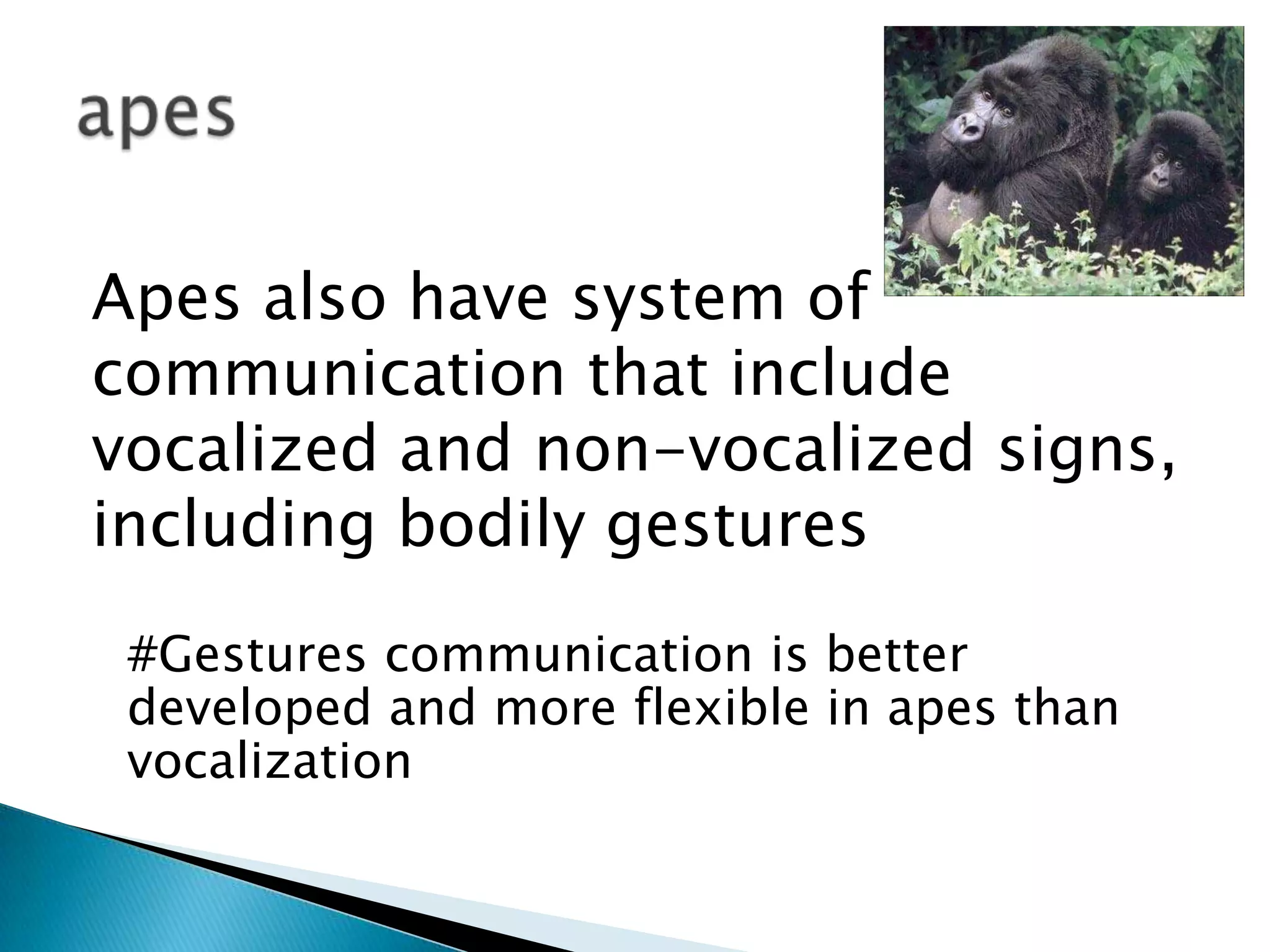
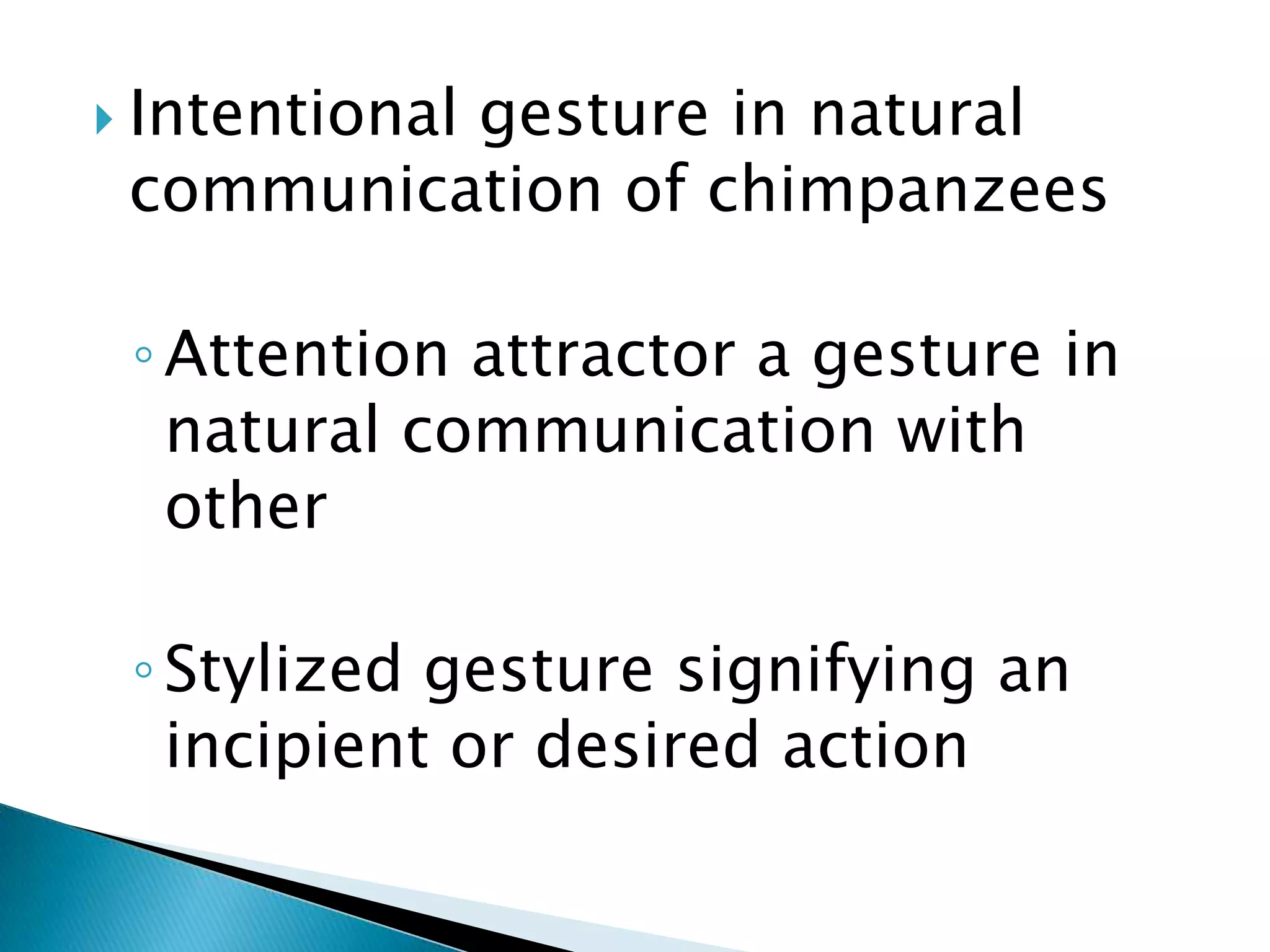


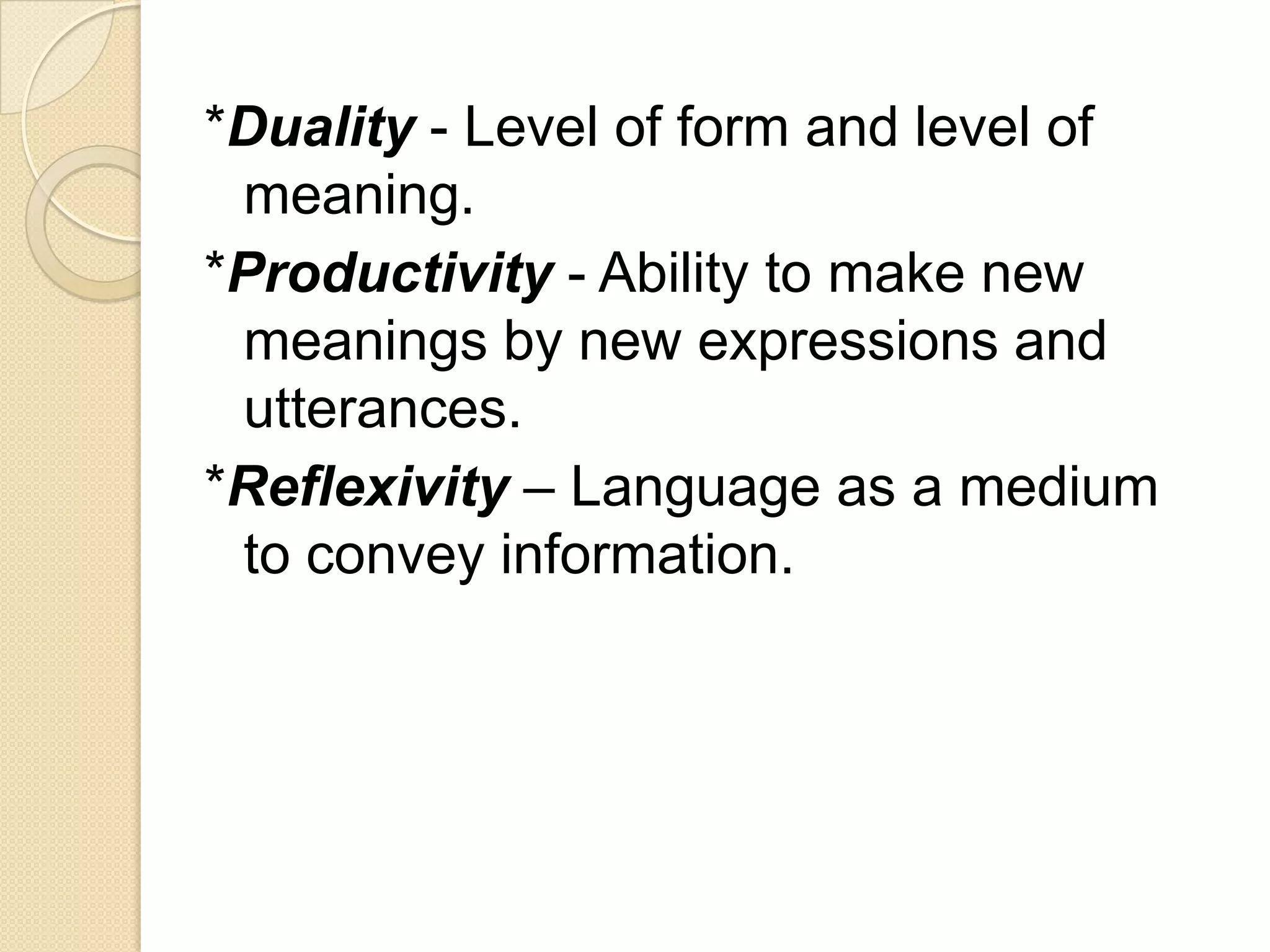
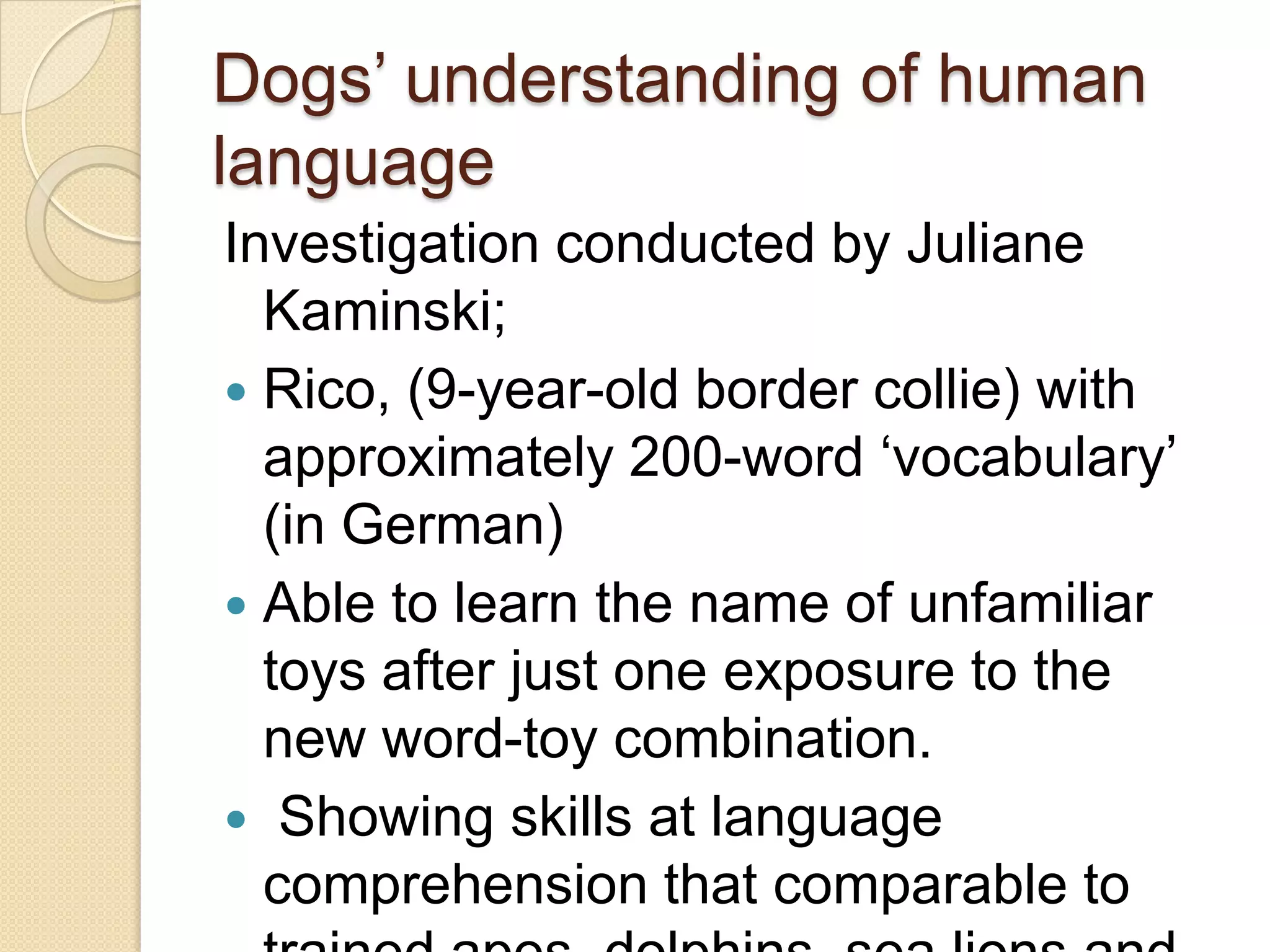

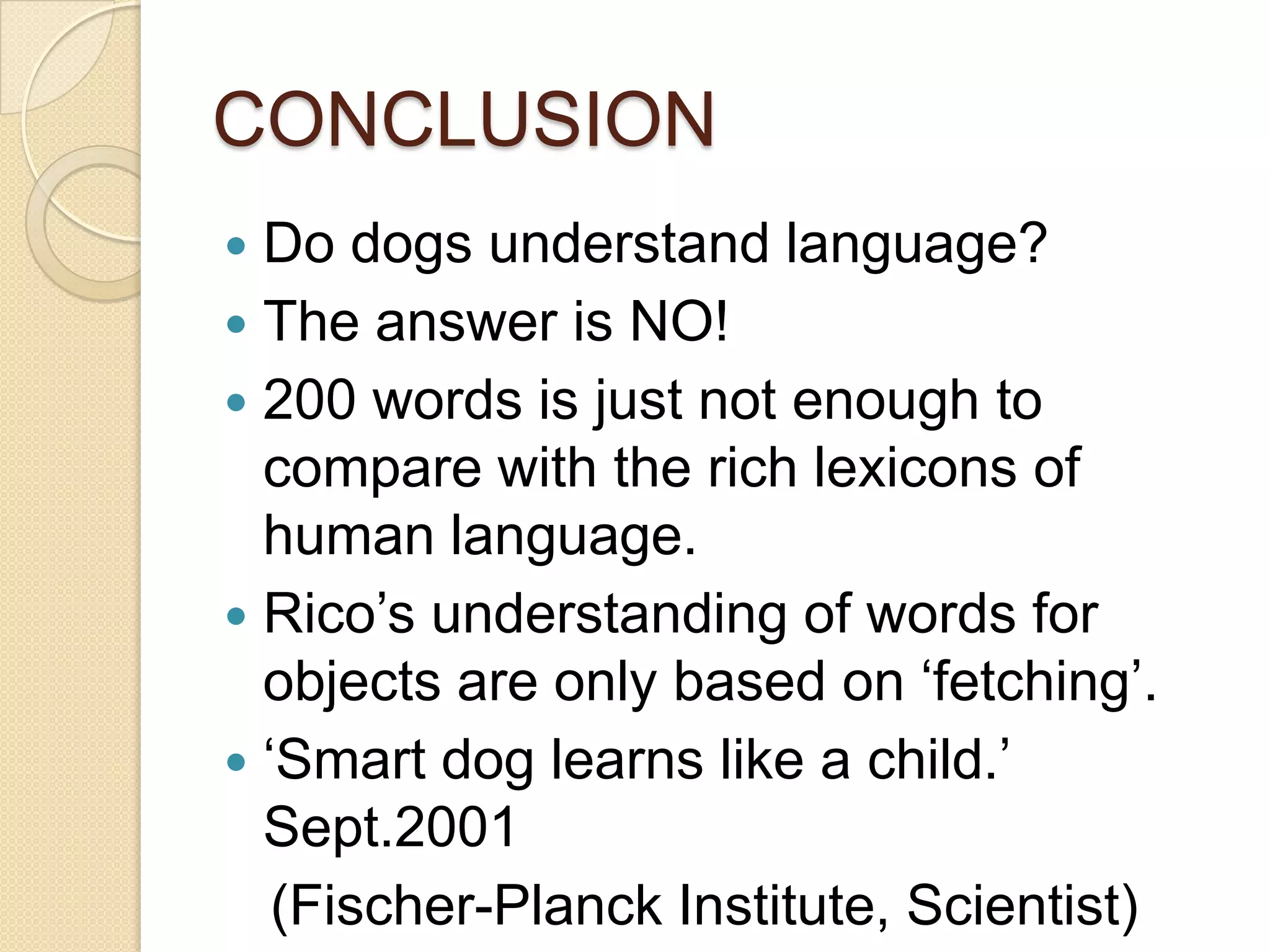
![Show dialect variation in their songsuse vocalization, facial expressions and posture to communicate with one another. use bodily signs including head-bobbing rapid glancing towards and away from another , individual, penile displays and tail-signals. System of vocalization for alarm calls: #a high pitched chatter warns of presence of snake.#a chip [short but loud barking call] gives warning of leopard and lion. #an uh warns of a minor predator such as hyena .Vervet monkeys](https://image.slidesharecdn.com/biocontext-language-110116191421-phpapp01/75/Bio-context-language-20-2048.jpg)

